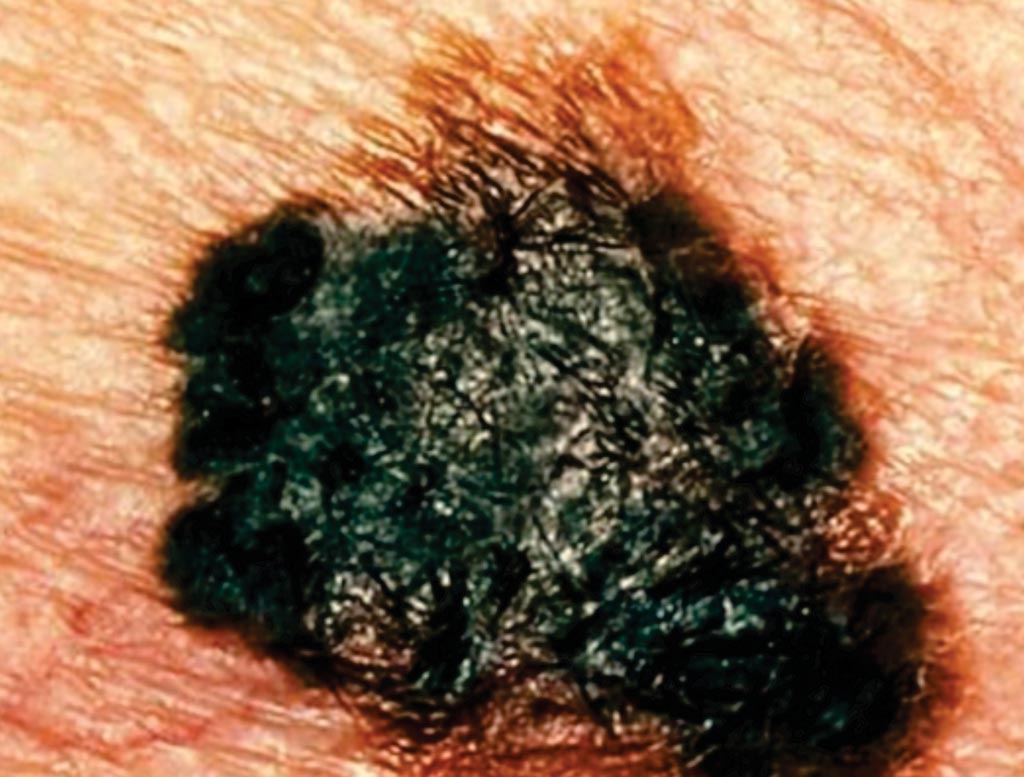Phenocopies Found in Melanoma-Prone Families
By LabMedica International staff writers
Posted on 20 Dec 2017
Melanoma, but no other cancers, is more common in the non-carriers in these families compared to the normal population. The phenomenon whereby non-carriers of a specific mutation copy the phenotype (in this case melanoma) from their mutation-carrying relatives is known as phenocopy.Posted on 20 Dec 2017
Malignant melanoma of the skin is one of the fastest increasing cancer types in the West and the main risk factors for melanoma are UV light exposure and hereditary factors. Children, siblings or parents of mutation carriers have a 50-50 chance of also having the mutation, which can be identified with a gene test.

Image: This is a malignant melanoma, the most severe form of skin cancer. Melanomas, which arise from dysplastic nevi tend to be asymmetrical, with poorly defined borders and often with varied coloration (Photo courtesy of Skin Cancer Foundation).
A team of scientists led by those at the Karolinska Institute (Stockholm, Sweden) examined the occurrence of tumors among Cyclin Dependent Kinase Inhibitor 2A (CDKN2A) wild type (wt) members of melanoma-prone families with CDKN2A mutations. Swedish and USA melanoma-prone families with CDKN2A mutations were included. Data was collected on tumors diagnosed among family members. Among the CDKN2A mutated families, members with CDKN2A wt status who were diagnosed with melanoma were designated phenocopies.
The team found that of patients with melanoma in the 266 CDKN2A mutated families, 7.1% were seen among members with CDKN2A wt status (phenocopy rate). Among the 256 CDKN2A wt family members of the CDKN2A mutated families, 7.4% were diagnosed with melanoma. The prospective relative risk for melanomas was significantly higher among the CDKN2A wt subjects compared with population-based controls, while no elevated risks of non-melanoma cancers were seen and their offspring did not have significantly elevated risks of melanoma or other cancers.
The authors concluded that members of CDKN2A mutation carrying families who test negative for their family’s mutation have moderately increased risk for melanoma and should, in addition to being considered for continuing dermatologic surveillance, be encouraged to follow sun safety recommendations and practice skin self-exams. Even though the CDKN2A mutation should be present in all populations, it has almost exclusively been identified in families with a Caucasian heritage.
Hildur Helgadottir MD, PhD, an Oncologist and senior author of the study, said, “Our results suggest that family members that test negatively for their family's CDKN2A mutation should be informed that they still can have an increased risk of developing melanoma. They should be advised to avoid sunburn, be aware of any change in their moles, and some might even need to be monitored by a dermatologist.” The study was published on December 7, 2017, in the journal Genetics in Medicine.
Related Links:
Karolinska Institute














